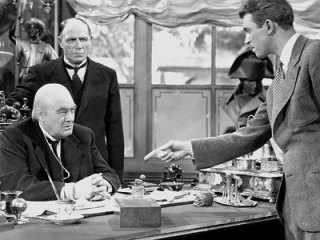Fun Facts About New Year’s Traditions Around the World
Australia: New Year’s is celebrated on January 1. This is a public holiday and many people spend it having picnics and camping on the beach. Their parties start on December 31. At midnight they start to make noise with whistles, rattles, car horns, and church bells to ring in the New Year.
Austria: New Year’s Eve is called Sylverterabend, which is the Eve of Saint Sylvester. they make a spiced punch in honor of the saint. Decorations and champagne are part of the celebration. Evil spirits of the old year are chased away by the firing of moroars, called boller. Midnight mass is attended and trumpets are blown from church towers at midnight, when people kiss each other.
Belgium: New Year’s Eve is called Sint Sylvester Vooranvond, or Saint Sylvester Eve. People throw parties and at midnight everyone kisses and exchanges good luck greetings. New Year’s Day is call Nieuwjaarrsdag – children write letters on decorated paper to their parents and god parents, and read the letter to them.
Great Britain: the custom of first footing is practiced. the first male visitor to the house, after midnight, is supposed to bring good luck. The man brings a gift like money, bread, or coal, to ensure the family will have plenty of these in the year to come. The first person must not be blond, red-haired, or a woman, as these are supposed to be bad luck. In London, crowds gather in Trafalgar Square and Piccadilly circus to hear the chimes of London’s Big Ben as it announces the arrival of the New Year.
France: The French New Year is Jour des Etrennes, or Day of New Year’s Presents. Dinner parties are thrown for the entire family, where presents are exchanged.
Germany: People drop molten lead into cold water to tell the future from the shape it makes. A bit of food eaten on New Year’s Eve is left on their plate until after Midnight, as a way on ensuring a well stocked larder in the coming year.
Hungary: In Hungary the people burn effigies, or a scapegoat known as “Jack Straw”. The scapegoat represents the evils and misfortunes of the past year. Burning the effigy is supposed to get rid of the bad luck.
India: The Indian New Year’s is started with a festival of lights called Diwali. Cards and gifts are exchanged and people finish off any uncompleted work.
Japan: Oshogatsu in an important time for foamy celebrations when all business are closed. To keep out evil spirits they hang a rope of straw across the front of their houses. The rope stands for happiness and good luck. When the New Year begins, the Japanese people begin to laugh, which is supposed to bring them good luck in the New Year.
Netherlands: People burn Christmas Trees in street bonfires and let fireworks ring in the New Year.
Poland: Known as St. Sylvester’s Eve., in honor of Pope Sylvester I. Legend is that Pope Sylvester foiled the plans of a dragon to devour the world in the year 1000.
Portugal: The Portuguese pick and eat twelve grapes from a bunch as the clock strikes twelve on New Year;s Eve. The twelve grapes ensure twelve happy months in the coming year.
Russia: Grandfather Frost, who wears a blue suit instead of Santa’s red, arrives on New year’s Eve with his bag of toys for the children.
Scotland: Night of the Candle. People prepare for New Year by cleaning their home and purifying it with a ritual or burning juniper branches carried through the home. The First Footer says that whoever the first person to set foot into your home on New Year’s Day decides the luck of the family for the coming year.
South Africa: The New Year is rung in with church bells ringing and gunshots being fired. On New year’s Day there is a carnival atmosphere.
South America: A dummy or straw person is ofter placed outside the home and burned at midnight…
Spain: Everything, including theater productions and movies, is stopped at Midnight on New Year’s. The clock strikes midnight and everyone eats twelve grapes. They eat one grape for each toll to bring good luck for the next twelve months of the New Year. Sometimes the grapes are washed down with wine.
United States: The New Year is often rung in with festive dancing parties and meals. People kiss each other at midnight and wish each other a “Happy New Year”.
Wales: At around 3:00 to 4:00 am on New Year’s morning, the boys of the village go from house to house with an evergreen twig to sprinkle on the people and then each room of their house, to bring good luck. On New Year’s Day the children travel the neighborhood singing songs are are rewarded with coins and sweets.

























 The Mind of Adam J. Kovitz
The Mind of Adam J. Kovitz